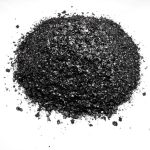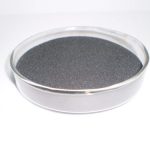Municipal sewage sludge treatment and disposal
Introduction: urban sewage sludge sewage treatment process solid waste generated. With the development of the cause of domestic sewage treatment, sewage water treatment plant and the total level of treatment will continue to expand and increase the amount of sludge produced is also increasing, currently its infrastructure and running costs of the total capital and operating wastewater treatment plant in the country in general the cost of 20% to 50% [1]. In addition to sewage sludge contains a lot of organic matter and abundant nitrogen, phosphorus and other nutrients, but also the presence of toxic heavy metals harmful ingredients, bacteria and parasites. In order to prevent secondary pollution caused by sludge and ensure the normal operation and the treatment effect of sewage treatment plants, sewage sludge treatment and disposal problems in urban sewage treatment has become increasingly prominent position occupied.
China has a population of over 1.3 billion, more than 640 cities, the urban population of 270 million. According to figures provided by the Chinese State Environmental Protection Administration, China’s current annual emissions of sewage approximately 40.1 billion m3, has been completed and the operation of municipal sewage treatment plant has more than 400 seats, the daily processing capacity of 25.34 million m3. Accounting treatment sludge production by 0.3% to 0.5% of the water (in the moisture content of 97% count) [2] calculation, China’s urban sewage sludge production is 76,020 m3 / d and 126,700 m3 / d (with moisture content 97% dollars) between. Therefore, the sewage treatment business in China continue to make progress at the same time, will face enormous pressure sludge treatment and disposal.
1 domestic status quo of urban sewage sludge treatment and disposal
1.1 Status of domestic municipal sewage sludge treatment
1.1.1 The existing sewage sludge treatment process
China has built to run municipal wastewater treatment plant, the sewage sludge treatment process can be roughly summarized as 18 kinds of processes, are shown in Table 1.
1.1.2 Sludge Thickening
Sludge thickening sludge mainly to reduce the gap in water, is commonly used in physical treatment methods, including gravity concentration method, flotation concentrate, centrifugal concentration method, etc., and their processing performance as shown in Table 2 [3]:
Table 1 domestic municipal sewage treatment plant has been built sewage sludge treatment process
No.
Sludge treatment process
The proportion of applications
1
Thickener → final disposal
21.63%
2
Imhoff tank sludge → final disposal
1.35%
3
Imhoff tank sludge drying field → → final disposal
2.70%
4
Concentrated digester tank → → → final disposal of wet sludge pond
6.76%
5
Concentrated digester tank → → → mechanical dewatering final disposal
9.46%
6
→ wet sludge thickener tank → final disposal
14.87%
7
Concentrated two-phase digester tank → → → final disposal of wet sludge pond
1.35%
8
Thickener → two digesters → final disposal
2.70%
9
Thickener → two digesters → mechanical dewatering → final disposal
9.46
10
Primary sludge digestion tank → drying → → final disposal field
1.35%
11
Two primary sludge digestion tank → → → mechanical dewatering final disposal
1.35%
12
Contact oxidation pond sludge drying field → → final disposal
1.35%
13
Concentration tank digesters → drying → → final disposal field
1.35%
14
Concentration tank → drying field → final disposal
4.05%
Fifteen
Primary sludge concentration tank → → → mechanical dewatering two digesters → final disposal
1.35%
16
Mechanical dehydration concentrate tank → → final disposal
14.87%
17
Primary sludge aerobic digestion → → → mechanical dehydration concentrate tank → final disposal
2.70%
18
Anaerobic digestion is concentrated pool → → → mechanical dehydration concentrate tank → final disposal
1.35%
Note: The table does not indicate the sludge are activated sludge.
Table 2 several concentration methods specific energy and solids concentration
Concentration method
Sludge type
The concentrated water content (%)
Specific energy
Dry solid (Kw · h / t)
Removal of water (Kw · h / t)
Gravity concentrate
Primary sludge
90 to 95
1.75
0.20
Gravity concentrate
Activated sludge
97 to 98
8.81
0.09
Flotation concentrate
Activated sludge
95 to 97
131
2.18
Box centrifuge enrichment
Activated sludge
91 to 92
211
2.29
Solid-bowl centrifuge enrichment
Activated sludge
92 to 95
117
1.23
As it can be seen from the table, the most economical primary sludge treatment by gravity concentration method. For the remaining sludge, because the activated sludge concentration is low, a high organic content, concentration difficulties, using gravity concentration method to be ineffective, while the use of flotation concentrate, centrifugal concentration, the device complexity, high cost, not suitable for China . Therefore, the domestic implementation of the activated sludge back to the primary sedimentation tank and primary sludge co-precipitation of gravity concentration process using activated sludge flocculation, sedimentation effect of improving primary settling tank, while the remaining sludge was concentrated . Domestic wastewater treatment plant have conducted experimental research, show that the early process of sedimentation tank effluent quality is better than the traditional process [4]. Thus, the domestic current gravity concentration method as the primary method of sludge thickening, sludge thickening method 1 case used in domestic wastewater treatment plant.
As the domestic economic situation and the shortage of funds, and the sludge organic matter content is low, so the gravity concentration method is still in the future will be the main domestic sludge volume reduction means.
1.1.3 sludge stabilization
Domestic sludge stabilization method currently used is anaerobic digestion, aerobic sludge digestion and composting have partially adopted, and sludge compost is in continuous research stage, and pyrolysis and chemical stabilization methods or technical reasons, or For economic reasons, energy consumption and rarely used [5]. Figure 2 shows the proportion of several sludge stabilization in the domestic share of the above-mentioned method.
1.1.4 Sludge Dewatering
Existing domestic sludge dewatering measures are mainly mechanical dewatering, and drying field area due to restrictions climatic conditions are rarely used. Figure 3 is several sludge dewatering technology in the domestic proportion.
1.2 Domestic Sewage Sludge Treatment Problems
Domestic municipal sewage sludge treatment started late, which also has many problems, mainly in the following aspects:
1.2.1 sludge treatment rate is low, the process is imperfect
Our tendency to focus on the presence of wastewater treatment, sludge treatment light. Many cities do not deal with the sludge as a necessary part of the wastewater treatment plant, sewage treatment plants are often built quite a long time after the construction of sludge treatment system, causing China’s urban sewage sludge treatment rate is very low. Also can be seen from Table 1, the process, the sludge treatment process domestic municipal wastewater treatment plant is far from perfect. After the sludge is concentrated, stable and dry digestion of dehydrated sewage plant only 25.68% above municipal sewage plants. This shows that more than 70 percent of the country does not have a complete wastewater treatment plant sludge treatment process. Does not have a sewage treatment plant sludge stabilization accounted for 55.70 percent, has not been a lot of sewage sludge stabilization process will have a serious secondary pollution. It does not have a dewatering sludge drying process accounts for 48.65 percent of the wastewater treatment plant. Sludge concentration, digestion, there are about 95% to 97% moisture content, the volume is still large. If such a large volume of sludge without drying sludge dewatering process, will bring a lot of inconvenience transport and subsequent disposal.
1.2.2 sludge treatment technology and equipment behind
Some of our current sewage treatment plant sludge treatment technology has been adopted by developed countries to abandon the technology, its level is still stuck in the 1970s and 1980s the level of developed countries, and some even level of foreign 60s. And some sludge treatment technologies do not conform domestic sewage sludge characteristics, the lack of the necessary investigation of the technology used. Sludge treatment equipment is relatively backward, poor performance, low efficiency, high energy consumption, less equipment, failed to form a standardized and serialized. Therefore, limiting the increase of sludge treatment technology and development.
1.2.3 Low sludge management level
Many have been built sludge treatment facilities not functioning, in addition to the technical level, low level of management is also an important factor. Poor quality of the management staff and most of the wastewater treatment plant operators, the lack of management experience, can not effectively organize production, coupled with less technical staff, various professional is not complete, so if there are problems on the production, I do not know how to deal with, and some sewage treatment plant sludge treatment system had long stopped. Improve the sewage plant management level, the early realization of scientific management is to ensure that the key to long-term sewage sludge system operation.
Sludge Treatment 1.2.4 Design of Low Level
There are a lot of drainage business development, has accumulated a wealth of experience in the design of sewage treatment, and training a large number of design talent. But in the sludge processing, China is still a lack of practical experience and design experience, especially the overall level of sludge treatment system is still relatively low, from the sewage treatment plant sludge treatment plant has been built, the poor operating conditions, can not ensure long-term operation of the apparatus after the completion of many plants, and carry out major technological transformation, resulting in a great waste of manpower, material and financial resources.
1.2.5 Sludge Treatment investment low
Domestic sludge treatment investment accounted for only 20% to 50% of total investment in sewage treatment plants, sludge treatment investment to developed countries accounted for 50% to 70% of the investment.
1.3 Availability of urban sewage sludge disposal and Analysis of
Ways of disposal of municipal sewage sludge, including land use, sanitary landfill, incineration and water consumptive and other methods, which are able to accommodate a large number of municipal sewage sludge, but the application of different countries vary. Since the early 1980s, our country’s first sewage treatment plant in Tianjin Jizhuangzi sewage treatment plant put into operation, the sludge that is used by a nearby suburb farmer farmland. Thereafter sewage treatment plant sludge Beijing Gaobeidian, also are used for farmland. With the gradual increase in the amount of municipal sewage sludge and sewage treatment plants, China has begun to sewage treatment plant sludge for landfill and urban greening, and the sludge as a substrate to produce fertilizer for agriculture. But in the country, the overall situation is still in the form of land use of sludge mainly sludge used in agriculture. It may be due to the management of domestic sludge contained in the sludge emphasis pathogens, heavy metals and toxic organic compounds and other physical and chemical indicators and odor control sensory index is not high enough, thus limiting the further disposal of sludge utilization, Figure 4 The proportion in the country several sludge disposal technology.
Domestic sludge disposal, namely the final way out of serious problems exist, can be seen from the chart is still 13.79% of sludge disposal is no, which will bring great harm to the environment pollution. Sludge odor emitted air pollution, pathogenic potential threat to human health, harmful heavy metals and toxic organic pollution of surface and groundwater systems. The reason for this phenomenon can be summarized as follows: As late start domestic sludge treatment and disposal, many cities do not have the sludge disposal sites into the overall urban planning. Cause a lot of difficult to find a suitable treatment plant sludge disposal and sludge disposal sites; weak foundation of sludge utilization, people take advantage of the awareness of the existence of sludge a serious shortage of final disposal of sludge lack of attention to some harmful The final disposal of the sludge left a hidden danger; utilization of sludge is not very high, there are still a part of the sewage sludge that is stored only by direct piled by the sanitation department Sinotrans suburbs, especially in the southern city of some domestic many use this the way. Such a disposition not only affects the normal operation of the wastewater treatment plant, as well as dumping of sludge and may produce secondary pollution, but also result in waste sludge resources. Thus, the problem facing our country is to develop technology to solve as soon as possible sludge disposal of sewage sludge continues to grow.
2 China’s urban sewage sludge treatment and disposal Measures
2.1 China’s urban sewage sludge treatment approach
From the domestic point of view of future trends, its urban sewage treatment will form a national investment of large-scale sewage treatment plants mainly invest in the region in accordance with the economic development of sewage treatment plants of different sizes coexist, so the sewage sludge The treatment should be to determine the appropriate process for China’s national conditions and technical equipment according to the environment in which the location of the wastewater treatment plant, treatment capacity, funding sources, economic and technical levels.
The purpose of sludge treatment is sludge volume reduction, stabilization, harmless and utilization. For all types of domestic sewage treatment plant of the city, it should continue to improve its sewage sludge treatment process, choose to include sludge thickening, anaerobic digestion, sludge dewatering, the perfect treatment process, and actively develop good performance, domestic The sludge thickening, stabilization and dewatering equipment and machinery to improve sludge containing solid rate, so that the subsequent sludge disposal and utilization can be carried out smoothly. Sewage sludge is concentrated on the choice of technology, because of domestic municipal sewage sludge in organic matter content is low, so using gravity concentrate is still a cost effective method of sludge volume reduction. Sludge dewatering methods include natural drying and mechanical dewatering, and drying naturally limited due to climate, region and rarely used. Mechanically dewatered sludge can effectively reduce sludge volume, and lay a good foundation for the subsequent disposal of sludge. Now commonly used mechanical dewatering technologies frame filter press dewatering, belt filter press dewatering and centrifugal dehydration, in actual operation, advantages and disadvantages, while a significant impact on the nature of the sludge dewatering effect, so the mechanical dewatering methods The choice should be based on the characteristics and requirements of the wastewater treatment plant sludge disposal process, run-in. Sludge treatment using different stabilization methods have more decisive influence on the selection process and the technical and economic whole sewage treatment methods are typically stable anaerobic digestion, chemical digestion and aerobic composting and other biological stabilization method and dosing of lime Stabilization Act. The current existing national situation, should be considered less investment in infrastructure, low operation and management costs, simple and effective method of sludge stabilization. Mesophilic anaerobic sludge digestion for the domestic part of the sewage treatment plant employed, it is not only able to degrade organic sludge, and kill some pathogens and parasites (eggs), so as to achieve the stabilization of the sludge as well as some harmless, and the biogas produced by digestion energy recovery can be made. However, this method investment, operation, strict management, safe operation of the technology and requirements are also higher, which is the domestic large-scale sewage treatment plant is feasible, but the lack of technical and economic advantages for the country’s small-scale sewage treatment plants, the use of anaerobic digestion as a sludge stabilization, harmless measure is not feasible. I believe that, for a small sewage treatment plants, one in the selection of the sewage treatment process, optional extended aeration (eg by oxidation ditch), due to the sludge generated by the process of growth with the SRT, decomposition of organic matter tends to perfect, volatile content reduced, the energy is gradually decreased, stabilized sludge. When the sludge age is long enough, the result of its steady aerobic digestion stable results very close to the anaerobic [6]. Second, it has carried out directly after birth sludge dewatering aerobic composting methods, aerobic composting is the use of the action of microorganisms, the sludge into humus in the process, eliminate malodorous sludge, compost sludge stabilization, harmless a high degree of economic simple, efficient low-power sludge stabilization harmless alternative technologies.
2.2 sludge compost is in line with China’s national conditions sludge stabilization technology
Sludge is preferably carried out before the composting process, the purpose is the result of biodegradation, so more conducive to absorption of plant nutrients morphology of plants, on the other hand also to eliminate odors, kill pathogens and parasites.
Currently composting method widely used around the world there are two kinds of static and dynamic compost, compost as natural law, ruled a closed composting cylindrical drum composting, composting and vertical multi-reaction bar static ventilation composting process, these methods are in continuous development and improvement.
In recent years, China has built some of the higher degree of mechanization of composting plants, such as Wuxi, Hangzhou, Wuhan, Shanghai and other places of mechanized composting technology, including a more complete pre-treatment, fermentation, post-processing technology and equipment, and its composting technology products indicators of quality, operations controllability, and other aspects of environmental quality have reached a high level. Tianjin Sewage Institute Jizhuangzi sewage treatment plant sludge compost temperature tests and studies, to explore even a small increase without modifiers, simple and easy to sludge composting process operations management, and proposed the process and technical parameters for the design and construction of the production line to provide a technical basis. In previous composting, digested sludge as the test fluid extract, comprehensive toxicity study for the test object paramecium showed that both lethal concentration difference of nearly 10 times, indicating degradation of toxic organic compost is significant [7].
1997 Beijing Municipal Environmental Protection Science Research Institute summarizes the results of years of research, at home and abroad to learn the advantages of various types of mechanical composting system design, development of dynamic sludge fermentation, which means high efficiency, low energy consumption, ease of operation and management and equipment. Depending on the development of the equipment, offered to sludge fermenter dynamic core of sludge fertilizer new process route, built with an annual output of 5000t means a fertilizer production. Production line includes dynamic sludge fermentation, mixers, disc granulators, dryers, screening machines and other components, stable and reliable operation of the equipment after the obvious economic benefits. Dynamic fermentation harmless sludge and sludge composting process proposed by the study, will be applied in sludge treatment and disposal Beijing Gaobeidian sewage treatment plant, a sewage sludge disposal to solve the problem in Beijing, will be play a good role. We can say that the outcome of the technology transfer and promote the use of already made a good start [8].
2.3 sludge disposal methods of land use is in line with China’s national conditions
In general, the countries of sludge disposal for the choice should take into account the environmental benefits and costs of disposal ecological balance between economic efficiency. An effective sludge disposal methods suited to their particular situation should be accepted on the environment and on cost-effective on the health, social methods. Sludge landfill on the mechanical properties of the soil requires a higher sludge, a large area of space and a lot of transportation costs, the need for ground handling in order to avoid contamination of groundwater seepage, landfill gas can pollute the environment and so on, in recent years, pollution Mud smaller and smaller proportion of landfill disposal; incineration technology and equipment complex, high energy consumption, high cost, and there is air pollution problem; sludge Touhai restricted geographic and international ocean-related conventions and the marine ecosystems and the human food chain is a threat, the Chinese government had accepted early 1994 three international agreements, commitments on 20 February 1994 from the disposal of industrial waste at sea and not on sewage sludge; sewage sludge is used as a building material in recent years New research stage, there are still many technical problems to be solved. Therefore, several methods described above is limited in our country.
Look from the sludge composition, wherein the content of organic matter, nitrogen and phosphorus are higher than the general farm manure, also contains potassium and other trace elements [9]. If applied to land, on soil physical, chemical and biological traits have some amelioration. Sludge organic matter can improve soil structural, soil bulk density decreased, increased porosity, soil aeration and water permeability increase field capacity [1011], thereby improving the physical properties of the soil. Application of Sludge can also improve soil cation exchange capacity, and improve soil pH buffering capacity, providing an active site nutrient exchange and adsorption, thereby improving soil fertilizer conservation [12]. A variety of nutrient-rich sludge, a significant increase in soil nitrogen and phosphorus, and can effectively provide nutrients to plants [11], to reduce the amount of chemical fertilizer application, which can reduce the cost of agricultural production. In addition, the sludge can increase soil microbial biomass and metabolic strength increased soil biological traits change, so the land use of sludge is suitable for the current situation of China’s economic development is a positive, productive sludge disposal methods [ 1314]. Meanwhile, China is a developing country, is a large agricultural country, its vast land resources is the development of sewage sludge land use natural advantage. Therefore, whether or fertilizer use from economic factors, factors from starting sludge land use in particular is a kind of agricultural sludge disposal methods in line with China’s national conditions. This disposal method one can find a fundamental way for domestic sewage sludge, on the other hand can also ease the shortage of rural resources.
Problems 2.4 sludge land use
2.4.1 strengthen control pathogens and parasites
Urban sewage treatment plant sludge contains large amounts of pathogenic microorganisms and parasites, if not control, the sludge in land use or use of human and animal health would cause harm. Therefore sludge before disposal or use of high, medium temperature aerobic or anaerobic treatment or the use of radiation treatment is an integral part.
2.4.2 emphasis on heavy metals in sludge and toxic organics control
Heavy metals and organic contaminants in sewage sludge has become an important limiting factor for land use of sludge, sludge often contain large amounts of copper, nickel, cadmium, lead, zinc, mercury and other heavy metals, and many kinds of toxic organic compounds, if farmland long-term administration will lead to soil contamination, they are absorbed into the body through the food chain after crops, thus affecting human health. Although the domestic municipal wastewater treatment plant effluent in sewage main, but the domestic content of heavy metals in urban sewage sludge or agricultural standards, some more than [215]. Therefore, the sludge for land use, should pay special attention to the problem of excessive heavy metals in sewage sludge. Sludge study of organic pollutants has been carried out in developed countries for many years, but we work in this area is not a lot. However, little does not mean that our work does not contain sewage sludge containing contaminants or less. Beijing Gaobeidian sewage treatment plant sludge has been detected in 35 kinds of nitrogen-containing aromatic compounds, and there are seven kinds of already quantified [16]. Therefore, the study of organic pollutants and heavy metals in these two areas in sewage sludge, there are many to be done, including changes in their manifestation of organic pollutants and heavy metals in sludge and the sludge treatment process and soil – Effect of sludge system. Only in this way can be a good solution to the impact of pollutants in the sludge on the environment and human health. However, the quality of sewage sludge quality is rooted in the sewage treatment plant, and therefore should proceed from pollution, reduce the concentration of heavy metals into the city sewage and other toxic substances, which must make the water of industrial waste water discharged into the city sewer line with “Sewage discharged into the city sewer water quality standards “(CJ18-86).
2.4.3 application amount of sludge
Agricultural use of sewage sludge, sludge can not only eliminate pollution of the environment, but also to make resources and increase crop yields. However, the unreasonable application of sewage sludge is likely to lead to the accumulation of heavy metals in the soil, pollution of soil resources and endanger human health. Generally a piece of farmland suitable quantity of sludge there is a limit, when this limit is reached, sludge farm should stop for some time before continuing. Specific sludge application rate should be based on the investigation, according to climatic conditions, geographical environment, crop type and soil assimilation capacity to develop suitable to the region of the rated load of sludge to ensure that the sludge field application security.
2.4.4 formulate and improve standards and legal regulations, promotion and popularization of environmental knowledge
Many developed countries have on the development of the use of sludge disposal laws and regulations on sludge standards, administered the choice of location, water conservation, control of pathogens, heavy metals allows applying intake, transport and so made the corresponding provisions. At present, China on sludge applied standards and laws and regulations are not perfect, such as the use of sewage sludge in agriculture established on the basis of wheat, so obviously there will be one-sided control standards on heavy metal only in the study, so such standards to be on the basis of scientific research to further improve. To the other hand, the strong community spread environmental knowledge. Sludge land is an important issue is to let the majority of users to understand the scientific application of sludge sludge interests and blind administration of hazardous sludge, sewage sludge land use and abide by environmental laws and regulations and scientific application of technical specifications.
3 Conclusion
With the development of China’s industrial and urban sewage treatment rate increase, which will inevitably produce increasing amounts. From the current situation, the domestic sludge treatment and utilization technology is still relatively backward, sludge treatment rate is still relatively low, people recognize the need for sludge treatment and disposal is not enough, the presence of sludge treatment and disposal of serious deficiencies, many of the problems to be solved . Meanwhile, China is a large agricultural country, will go through the sludge compost stabilized after land recycling, should be a way to take advantage of domestic sludge disposal are more promising. To solve the domestic sludge treatment and disposal of the existing problems, make full use of sludge such resources, reduce environmental pollution, China must vigorously develop the sludge disposal and use of various techniques.








